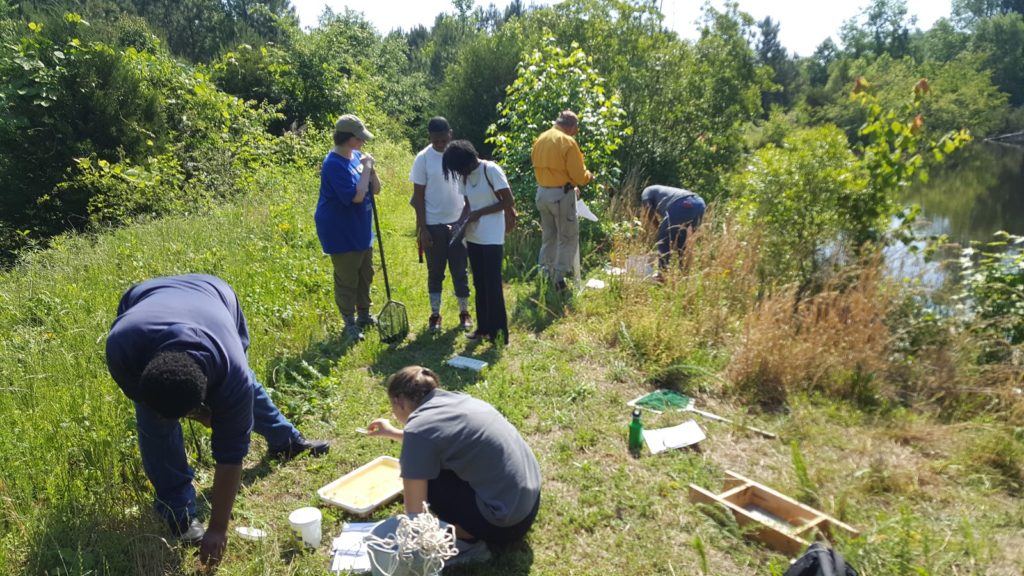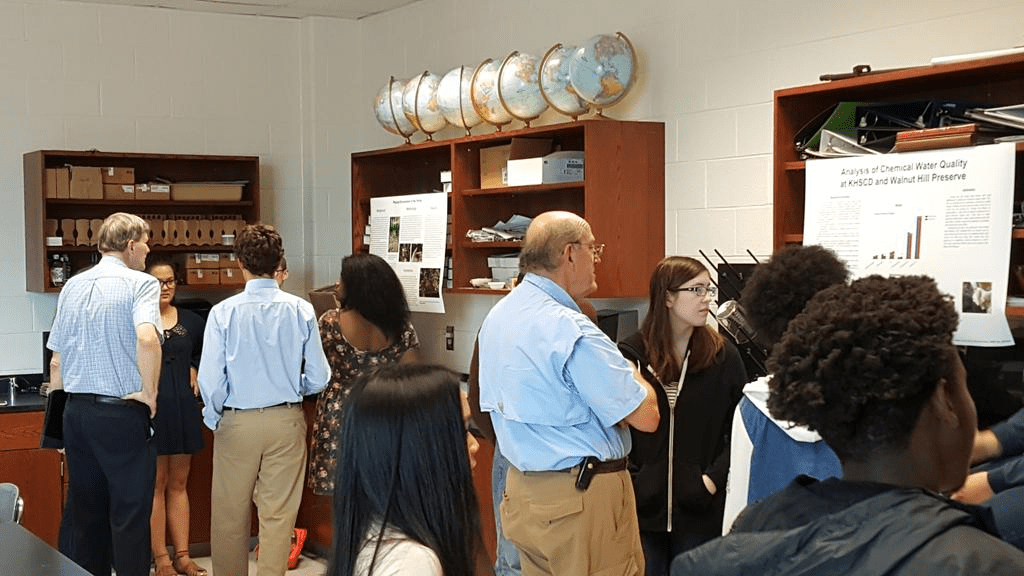Guest Post by Jeff Deal, Knightdale High School of Collaborative Design’s Environmental Science Teacher

KHSCD students working with Center for Human-Earth Restoration staff to complete fieldwork.
AP Environmental Science students from Knightdale High School of Collaborative Design undertook a field experiment with the intent of comparatively assessing water quality at a pond on campus and a pond located at Walnut Hill Nature Preserve. Both ponds are man-made agricultural impoundments that served as reservoirs for irrigation and livestock, but have now been left undisturbed since the respective establishments of KHSCD and Walnut Hill Preserve. The key difference between the ponds is the proximity of KHSCD’s parking lot and its vehicular traffic. The lot’s stormwater drainage system discharges through a vegetated buffer to the pond. In this way, the pond provides a settling area for any materials carried by the parking lot runoff. While this is beneficial for water quality downstream, it raised the possibility of observable effects on water quality in the pond itself. Students conducted this investigation to determine if these effects were present, and to connect authentic fieldwork to concepts they have studied this semester in the classroom.
We partnered with environmental educators from The Center for Human-Earth Restoration to observe the physical surroundings of the ponds, test water chemistry, and sample aquatic macroinvertebrates. We found that the ponds were remarkably similar in environment and chemistry, with the Walnut Hill pond showing a small advantage in biodiversity. Students drew conclusions about the importance of vegetated buffers in maintaining clean water, and also speculated about future studies that could expand their findings, such as repeating the experiment right after a storm event.
This is our second fieldwork experience at the Walnut Hill Preserve, and in both cases, we took some time to talk to students about their experience outdoors. The vast majority of the students do not regularly participate in outdoor activities in nature, and the initial safety briefing about fire ants and ticks often doesn’t help much with their preconceived notions. However, when asked to describe their experience at the end of the day, students consistently used words like “peaceful,” “relaxing,” and “adventurous.” In addition to the lab work we conducted on site, we took some time to experience the preserve in sight, sound, smell, and touch. While we are fortunate to have some wooded areas on campus that we can walk out the door and instantly study, being able to access a large-scale preserve such as Walnut Hill allows for those sensory experiences to be completely natural, without the interference of traffic from just around the corner. While our Environmental Science course standards can be taught in any setting, it is essential for students to have experiences that forge a personal connection to the natural world if we are to expect them to take these lessons to heart. We are grateful to Triangle Land Conservancy for opening these doors to our students, and are excited for future opportunities that may grow from our continued partnership!
Students presenting research posters to TLC Volunteer Jack Blackmer and CHER Director Randy Senzig

